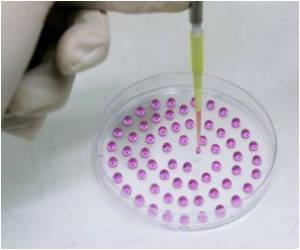Their results showed that the hES cell lines they established were a worse match to the Brazilian population than hES lines developed elsewhere

In their study, the researchers developed an hES cell line (the first in South America) they called "BR-1" derived from a Brazilian population with embryos donated by couples who had sought assistance from private fertility clinics. Their research was compatible with the 2005 Brazilian national legal, ethical and clinical guidelines for embryonic stem cell research using tissue that had been frozen for the legally mandated time of at least three years, and that had been produced for reproductive reasons.
Their results showed that the hES cell lines they established were a "worse match" to the Brazilian population than hES lines developed elsewhere, particularly those developed in the U.S. and Singapore. The reasons for that may be several, said Dr. Pereira.
"The Brazilian population is one of the most heterogeneous in the world, and the genes of Brazilians are mosaics," said Dr. Pereira. "However, an analysis of BR-1 showed that it is mostly European in origin. The reproductive assistance offered by the Brazilian public health system does not include cryopreservation of surplus embryos, meaning that the only research material available came from private clinics where couples with above-average incomes could afford the high cost of assisted reproduction."
According to the researchers, that segment of the Brazilian population is mostly composed of people self-identified as white - of European ancestry - and so are not representative of Brazilian ethnic admixture and, thus, are unable to be widely compatible with Brazil's diverse population genetics.
"Although we have successfully established the first line of hES from the Brazilian population that adds to the pool of genetically different pluripotent cells available, it will be important to have access to embryos from the more mixed population and assistance from the Public Health System," concluded Dr. Pereira.
Advertisement
Advertisement












